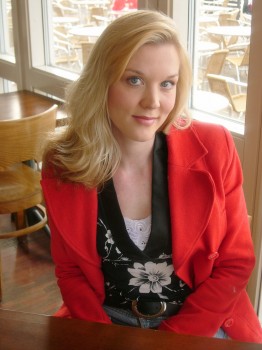Author: Tiia Strandén
Kaj Korkea-Aho: Gräset är mörkare på andra sidan [The grass is darker on the other side]
9 November 2012 | Mini reviews, Reviews
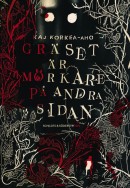 Gräset är mörkare på andra sidan
Gräset är mörkare på andra sidan
[The grass is darker on the other side]
Helsingfors: Schildts & Söderströms, 2012, 425 p.
ISBN 978-951-52-2999-1
€22.40, hardback
Finnish translation:
Tummempaa tuolla puolen
Helsinki: Teos & Schildts & Söderströms, 2012. 436 p.
Suomennos [Translated by]: Laura Beck
ISBN 978-951-851-482-7
€28.40, hardback
Benjamin’s life is turned upside down when he, in despair over his fiancée’s death, discovers things he perhaps didn’t want to know. A photograph taken by a speed camera minutes before the car crash shows that Sofie wasn’t alone in the car. A group of childhood friends reunite for Sofie’s funeral; dark secrets from the past which had until now lain hidden away and unexplained start to come out. What really happened when one of the villagers died in mysterious circumstances? Who murdered little Sidrid Ask? The enormous dark shadow filling people with chilling terror – is it Raamt, evil himself, walking amongst them again? Which should they be more scared of, the supernatural evil or the everyday and human that seems to be all around them? In his second novel the former television presenter and comedian Kaj Korkea-aho (born 1983) writes with great detail and a finely tuned ability to pitch his language. His novel is filled with fear, evil and supernatural phenomena, but at the same time with humour and warmth. The intrigue advances at an addictively fast pace. Korkea-aho takes his novel from biting parody, via horror to a beautiful yet serious depiction of the power of friendship.
Translated by Claire Dickenson
Springtime in Paris: Nordic writers on a French visit
25 March 2011 | In the news
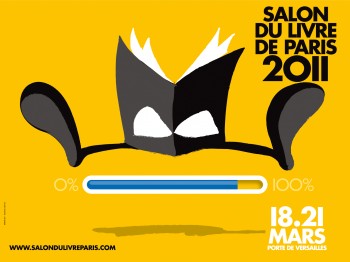 With an icy northerly wind at my back I took off from Helsinki and landed in Paris, where it was springtime and the cherry trees were in bloom. The aim of my trip was to join eleven translators from Finnish into all the main Nordic languages in examining the trickiest corners of the Finnish language and discussing the actual working conditions of literary translators, as well as the possibilities for Nordic literature to assert itself in the world.
With an icy northerly wind at my back I took off from Helsinki and landed in Paris, where it was springtime and the cherry trees were in bloom. The aim of my trip was to join eleven translators from Finnish into all the main Nordic languages in examining the trickiest corners of the Finnish language and discussing the actual working conditions of literary translators, as well as the possibilities for Nordic literature to assert itself in the world.
I was also going to meet with and listen to more than sixty writers from all the Nordic countries. Why did I have to go to Paris to do it? Because this was where Bokskogen, the Forest of Books, had grown.
At the Salon du Livre held in Paris from 18 to 21 March, at which the Nordic countries were the guests of honour, FILI (the Finnish Literature Exchange) was in charge of coordinating the Nordic pavilion, some 400 square metres in area.
The airy Scandinavian Forest of Books was filled with the murmur of Parisians in search of something Nordic to read and intent on having their newly purchased books signed by authors like Sofi Oksanen, Kari Hotakainen, Matti Rönkä, Monika Fagerholm, Katarina Gäddnäs, Seita Parkkola, Aira Savisaari, Johanna Sinisalo, Aino Havukainen and Sami Toivonen.
Before the official inauguration by France’s Minister of Culture Frédéric Mittérand the programmes had already been underway for four days. Just over a hundred professional people – publishers, translators and other cultural figures and institutions from across the Nordic countries – took part in various workshops to discuss common focal points and share experiences and best practices with each other and their French colleagues.
One of the major events was the Cultural Forum, a collaboration between FILI, the Nordic Council of Ministers and the Finnish presidency of the Nordic Council of Ministers. Its theme was the training of translators, and also the book industry in a global context.
In early March a dozen French journalists and booksellers toured Helsinki and Tammisaari (Ekenäs) in order to meet Finnish authors and interview them as a prelude to the big show. As a result Nordic literature also made its presence felt in France’s press and bookstores.
Translated by David McDuff
Aquatic escapades
12 November 2010 | Reviews
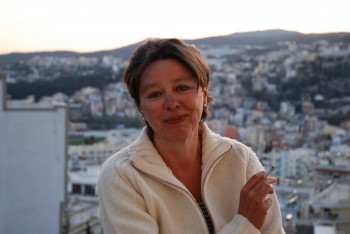
Susanne Ringell. Photo: Anders Larsson
First about the form: the wavy, turquoise cover of Vattnen (‘Waters’), Susanne Ringell’s third collection of short stories, is protected by a layer of waxed paper that looks like a thin film of ice.
Inside the book, water flows everywhere: the twelve stories are set in it or near it, or mimic it in form. The water symbolises a fundamental force, a consolation, but also an elusivity. The characters in the stories exist in a kind of volatile, intermediate state – they are heading for a crisis or are in the moment immediately after one.
Since 1993 Ringell (born 1955) has produced short story collections, poetry, prose poetry, mini-stories and a novel. In them, as in Vattnen (Söderströms, 2010), Ringell’s language is her own: beautiful, robust and fragile, vivid, subtle and at the same time practical. More…
Johanna Holmström: Camera Obscura
6 January 2010 | Mini reviews, Reviews
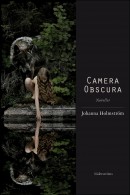 Camera Obscura
Camera Obscura
Helsinki: Söderströms, 2009, 334 p.
ISBN 978-951-52-2616-7
€ 24,90, hardback
This short story collection is Johanna Holmström’s fourth book since her debut in 2003. Camera Obscura is a fabric of narratives and personal destinies which create a dense, novel-like whole. The preamble is a young environmental activist’s suicide. The form is interwoven with the content, so that the stories in the book can be read as separate narratives, but to understand them fully we must read them all. Each person’s destiny is shaped in part by the choices and actions of others; to what extent is the individual responsible for the whole? Holmström (born 1981) writes fiction that is unpredictable but stylistically assured. She seamlessly weaves with classic fairytale motifs and also has a keen eye for detail and psychology. Camera Obscura is at once eerie, suspense-filled and socially aware.

